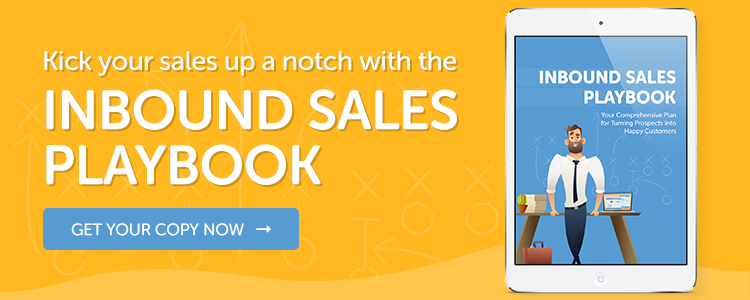Overcoming price objections is one of the most vital skills in the sales toolkit.
Every sales pro will have to overcome price objections – and some of them will end up doing it a lot. Simply said, price objections are some of the most common obstacles to a sale.
While it’s easy to assume they’re most common in B2C, the sad fact of the matter is that you’ll hear price objections often, especially from decision-makers who have never made a purchase in your category before and don’t know precisely what to expect.
Big enterprises flush with cash – think of Fortune 50 firms on an upswing – might avoid pointing the finger at price as a matter of pride. Everyone else, from one-person shops to multinationals, will raise this objection ... often before any of the others.
It can be frustrating, yes, but it’s also predictable.
And let’s face it: A predictable challenge is that much easier to deal with!
Overcoming price objections calls for quick thinking and a number of strategies at your disposal. It’s essential to be light on your feet and practice active listening, even if you feel like a lead is pulling away from you on the price issue. Maintaining trust is always the key!
When it comes to overcoming price objections, remember these tips:
1. Adopt a Sales Qualification Scheme
If you’re overcoming price objections day in and day out, there may be another problem at work.
Some aspect of your marketing mix might be picking up prospects who aren’t really ready for your solution – depending on their own constraints, they might never become a good match.
Likewise, your team might not be pulling all the details they need from your leads once they’re handed off from marketing to sales. This can cause you to overlook problems with fit.
The solution: A sales qualification approach that will help you recognize bad leads fast.
At Bluleadz, our favorite qualification scheme is BANT:
- Budget
- Authority
- Need
- Timeframe
BANT accounts for all the basic facts you need from prospects to determine that they really are qualified leads. Using progressive profiling, you can gradually glean this information in a light-touch way as prospects progress through the three-stage buyer journey.
2. Make Sure Your Web Content Addresses Common Objections

If your enterprise is like most others, your web content is probably handled almost entirely by your marketing team. It makes sense that marketers should crank out content – after all, every successful brand needs content aligned to the buyer journey for every buyer persona.
And for most companies, that will turn out to be a lot!
But: If you’re not adding the sales perspective to content, you’re selling yourself short.
Sales pros are the ones who get to see the new twists and turns in leads’ thinking almost as they happen. That means they’ll not only get to witness emerging objections, but they'll experience all the many ways people can come out with the same old price objections as always.
The more your web content addresses objections – including price – the better your position will be when it’s time for you to talk one-on-one with your leads. After all, it’s up to your content to vouch for the value you have to offer and “pre-sell” leads on a lasting customer relationship.
Do your part to achieve a closed loop between sales and marketing: Report any new curve balls your leads throw at you during your discovery sessions. As those ideas get transmuted into fresh content, it’ll make overcoming price objections a whole lot easier.
3. Verify That It’s Not a Stalling Tactic
Imagine that you’re visiting a hot tourist destination like the Eiffel Tower in Paris or the Las Vegas Strip. The scenery and atmosphere are second to none. There’s one problem: No matter where you go, you’re surrounded on all sides by pushy souvenir sellers.
What are you most likely to do? It’s simple: Tell them you don’t have any money.
Why? Because you know overcoming price objections is hard.
Crazy as it sounds, this simple survival instinct is one that comes up time and time again even among people who have a budget of millions. When people don’t want to get into the real reasons behind their objection, they pull their pockets out and shrug.
Of course, you won’t get far with most decision-makers by telling them they’re pulling your leg.
Instead of calling them on it, circle around and start probing at the issue using open-ended questions that focus on the other three qualification areas: That is, Authority, Need, and Timeframe. Often, you know you’re talking to the right person, so you can skip Authority.
If you approach things in a roundabout way that remains friendly, helpful, and solution-focused, you’ll often find out there are other objections beneath the obvious one.
You might still find that you can’t make a sale that day. Still, you won’t be barking up the wrong tree: You can use your new insights into your lead and uncover ways to maintain the relationship.
4. Look at Your Competitors
Let’s face it: Price isn’t always a differentiator when it comes to big ticket B2B sales.
But sometimes – just sometimes – it may be.
If you’ve somehow priced yourself out of the ballpark, then leads will react to that. They aren’t likely to point out the problem bluntly, even if it’s obvious to them: They just researched your competitors, and you’re selling at 30% or 50% higher than they are.
This is especially pressing when it comes to subscription-based services.
Also remember that time and effort are costly, too. Business decision-makers may love the idea of what your product could deliver for them, but not the overhead and opportunity cost involved in implementation. They may worry about adoption or ongoing support.
If you can’t reduce the cost, then ask yourself: “How can I reduce the risk?”
5. Refocus on Value
Ultimately, leads who fight you tooth and nail on price might not be a good fit for you.
Customers who nickel and dime you on your quoted price often become those who are hardest to please later on. They might have expectations for your customer service, features, and incentives that are beyond anyone’s power to grant: They want a magic genie, not a business solution.
In the long run, this kind of customer costs more in time and trouble than they can ever bring in.
Of course, not all leads with price concerns are like that. They could simply need a chance to see things from your perspective. Discuss what you offer in terms of ROI and concrete connection with business goals, using your case studies and whitepapers as a guideline.
The better you are at overcoming price objections, the more efficient and productive you’ll be. This is one small, specific skill that can add several sales a year to your bottom line and propel your brand to even greater heights of success.


Rob Steffens
I am the Director of Marketing here at Bluleadz. I'm a huge baseball fan (Go Yankees!). I love spending time with friends and getting some exercise on the Racquetball court.